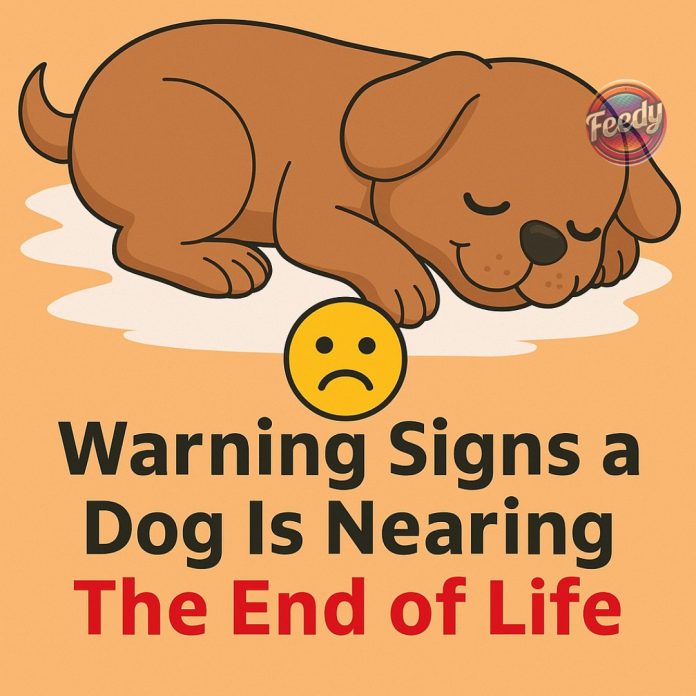Recognizing the signs that indicate your dog may be approaching the end of their life is crucial for providing compassionate care during their final days. While these signs can vary among individual dogs, several common indicators can help you assess their condition and ensure their comfort.
1. Loss of Interest in Favorite Activities
A noticeable decline in enthusiasm for activities your dog once enjoyed, such as playing, walking, or interacting with family members, can signify that they are not feeling well. This withdrawal often reflects a decrease in energy and overall well-being.

2. Decreased Appetite and Thirst
As dogs age or become ill, they may exhibit a reduced interest in food and water. This decline can lead to weight loss and dehydration, further impacting their health. Monitoring their eating and drinking habits is essential to address any concerns promptly.
3. Increased Fatigue and Lethargy
An increase in sleep and a general lack of energy are common in aging or unwell dogs. They may prefer resting over engaging in activities and might be less responsive to stimuli.
4. Difficulty with Mobility
Challenges in movement, such as stiffness, limping, or reluctance to stand or walk, can indicate joint pain or muscle weakness. Conditions like arthritis are prevalent in older dogs and can significantly affect their quality of life.
5. Incontinence and Loss of House Training
Accidents in the house or a loss of control over bladder and bowel functions can occur as dogs age. This incontinence may result from weakened muscles or underlying health issues.
6. Changes in Breathing Patterns
Labored breathing, irregular respiratory rates, or persistent coughing can be signs of respiratory or cardiac problems. These symptoms warrant immediate veterinary attention to assess and manage underlying conditions.
7. Behavioral Changes and Confusion
Disorientation, confusion, or signs of canine cognitive dysfunction (similar to dementia in humans) can manifest in older dogs. They may appear anxious, forget familiar routines, or get lost in familiar environments.
8. Loss of Muscle Mass and Weight
Significant weight loss and muscle atrophy can occur due to decreased activity, metabolic changes, or chronic illness. These physical changes can weaken your dog and make daily activities more challenging.
9. Dull or Thinning Coat and Skin Changes
A lackluster coat, hair loss, or skin issues like dryness and the development of lumps can indicate declining health. Regular grooming and veterinary check-ups can help manage these changes.
10. Digestive Issues
Frequent vomiting, diarrhea, or constipation can lead to discomfort and dehydration. Persistent gastrointestinal problems should be evaluated by a veterinarian to determine appropriate treatment.

11. Seeking Solitude
Some dogs may isolate themselves or seek out quiet, secluded areas as they near the end of their lives. This behavior can be a coping mechanism for dealing with discomfort or confusion.
Providing Comfort During Your Dog’s Final Days
Ensuring your dog’s comfort during their final stages involves several compassionate steps:
- Consult Your Veterinarian: Regular check-ups can help manage pain and address any treatable conditions.
- Create a Comfortable Environment: Provide a quiet, cozy space with easy access to food, water, and a comfortable resting area.
- Maintain Hygiene: Assist with grooming and cleanliness, especially if incontinence is an issue, to prevent infections and discomfort.
- Offer Gentle Exercise: Encourage light activities to the extent your dog is comfortable, promoting circulation and mental stimulation.
- Monitor Their Diet: Offer palatable, easily digestible foods and ensure they stay hydrated.
- Be Present: Spend quality time with your dog, offering affection and reassurance.
Recognizing these signs and responding with empathy and care can make your dog’s final days as comfortable and peaceful as possible. Always consult with your veterinarian to make informed decisions about your pet’s health and well-being.

















